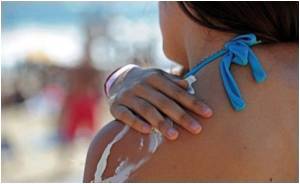When British researchers are exploring the possibility of bacterial sensors, Swedish scientists are talking of developing allergy-free sunscreen from bacteria.

So researchers with the University of Gothenburg and Chalmers University of Technology are leading the hunt for a natural UV filter that does not have undesired effects.
gUnfortunately, several of the chemical UV filters used in sunscreens cause contact allergy, either of themselves or when they are exposed to sunlight. We have therefore studied a UV filter, scytonemin, that is found in certain bacteria. We have managed to produce this substance artificially in the laboratoryh, says Isabella Karlsson, research student in the Department of Chemistry at the University of Gothenburg.
Sunlight contains two types of UV radiation. The type known as gUVAh penetrates deeply into the skin and causes the pigment that we already have to darken. UVA, however, also causes the skin to age prematurely. The most common chemical UVA filter on the market is 4-tert-butyl-4Œ-methoxy dibenzoylmethane, BM-DBM, which is known to cause photocontact allergy when it reacts on the skin. Isabella Karlsson has shown that BM-DBM breaks down in UV light to form several different products. One of these, a group of substances known as garylglyoxalsh, proved to be very potent contact allergens.
Isabella Karlsson also describes in her thesis studies of a relatively new UV filter, octocrylene. The popularity of octocrylene has increased a great deal since it is not broken down by sunlight, and it stabilises other substances such as, for example, BM-DBM. However, several reports of allergic reactions to octocrylene have appeared in recent years. Clinical studies and laboratory experiments have suggested that octocrylene can cause contact allergy, both of itself and when it is exposed to sunlight. Many patients who reacted by developing photocontact allergy to octocrylene developed photocontact allergy also to the drug ketoprofen.
gWe tested 172 patients with suspected skin reactions to sunscreen creams and/or the drug ketoprofen in one of our studies. It turned out that 23 of these patients reacted to the UV filter octocrylene. Five of them were diagnosed with contact allergy and the other 18 with photocontact allergy.h
Advertisement
Advertisement








